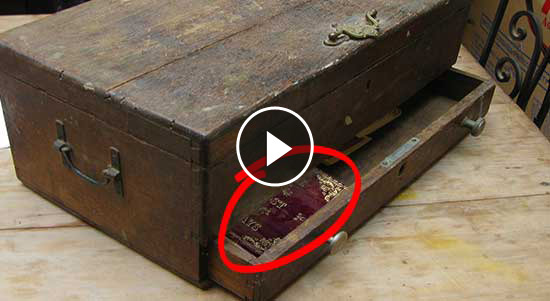
Mirror, Mirror On The Wall Graphic © Inspiration Power Boost
“Mirror mirror on the wall,
I’ll always get up after I fall.
And whether I run, walk or have to crawl,
I’ll set my goals, and achieve them all.”
Resilience, Reflected
The quote beautifully captures the essence of resilience, determination, and unwavering spirit. It speaks to the heart of every individual who has faced challenges, setbacks, and obstacles in their journey. The mirror, often a symbol of self-reflection, is posed with a statement of affirmation. It’s not about the number of times one falls, but the strength and courage to rise every single time. The journey might require different paces – running, walking, or even crawling, but the destination remains clear. It’s about setting goals and achieving them, no matter the hurdles.
Empowerment in Every Word
The words resonate with the power of self-belief and the importance of perseverance. They remind us that while external validation can be motivating, true strength comes from within. The mirror, a silent observer of our daily lives, witnesses our highs and lows. Yet, it’s the reflection of determination in our eyes, the unwavering spirit, that truly defines us. Every individual has their unique journey, filled with dreams, aspirations, and challenges. But it’s the commitment to oneself, the promise to rise after every fall, that sets the path to success.
A List Of Interesting Facts About Mirrors
Ancient Origins: The earliest mirrors were made from polished stones such as obsidian, a naturally occurring volcanic glass, used in Anatolia (modern-day Turkey) around 6000 BC.
Metal Mirrors: Before the advent of modern glass mirrors, many ancient cultures used polished metal mirrors. For instance, the Egyptians used mirrors made from polished copper.
Glass Mirrors: The first glass mirrors were created in Lebanon in the 1st century AD. They were made by coating a glass surface with metal, typically gold or silver.
Venetian Craftsmanship: Venice became a center of quality mirror production in the 16th century. Venetian mirrors were highly sought after across Europe for their exceptional craftsmanship and quality.
Symbolism in Art and Literature: Throughout history, mirrors have been used as powerful symbols in art and literature. They often represent truth, self-knowledge, vanity, and sometimes, the supernatural.
Scientific Use: Mirrors are not just for reflection; they are crucial in scientific instruments, including telescopes, microscopes, lasers, and cameras. They help in redirecting and focusing light.
The Hall of Mirrors: The Hall of Mirrors in the Palace of Versailles in France is one of the most famous mirror-decorated rooms in the world, showcasing the wealth and craftsmanship of the time.
First Reflecting Telescope: Sir Isaac Newton invented the first practical reflecting telescope, known as the Newtonian telescope, in 1668. It used a mirror rather than lenses to focus light.
Infinite Reflections: When two mirrors are placed facing each other, they create the appearance of an infinite number of reflections, a phenomenon known as the “infinity mirror effect.”
Cultural Superstitions: Mirrors are associated with numerous superstitions. For example, breaking a mirror leading to seven years of bad luck is a common belief in many cultures.
Rear-View Mirrors: The rear-view mirror was patented by Elmer Berger in 1921, revolutionizing automotive safety by allowing drivers to see behind them.
One-Way Mirrors: One-way mirrors, also known as two-way mirrors, are coated with a partially reflective film, allowing for observation without being seen. They are commonly used in security and surveillance.
Mirrors in Space: The Hubble Space Telescope’s primary mirror is about 2.4 meters in diameter and was a technological marvel of its time, allowing astronomers to see deeper into space than ever before.
Curved Mirrors: Mirrors can be curved (concave or convex) to manipulate light differently. For example, concave mirrors are used in telescopes to focus light, while convex mirrors are used for wide-angle viewing in vehicles.
Psychological Uses: Mirrors are used in psychological studies and therapies, such as the mirror therapy for phantom limb pain, illustrating the complex interplay between perception and the brain.
The Enigmatic History of the Mirror
Mirrors, as we know them today, are a culmination of centuries of innovation and cultural significance. Their origins trace back to ancient civilizations, where polished stones, metals, and other reflective materials served as rudimentary mirrors. The ancient Egyptians, for instance, used polished copper and bronze as hand mirrors, while the Chinese employed polished metal alloys. These early mirrors were not just tools for reflection but also held religious and cultural significance, often symbolizing truth, purity, and clarity.
In the Greco-Roman era, mirrors began to take on improved forms. Craftsmen started producing handheld mirrors made of polished metal, often adorned with intricate designs and artwork. These mirrors were considered luxury items, symbolizing status and beauty. They were often used in religious and mystical rituals, believed to possess the power to glimpse into the future or the divine.
The Renaissance period marked a significant advancement in mirror technology. With the development of the glassblowing technique in Venice, the world saw the creation of the first flat glass mirrors. These 16th century Venetian mirrors, backed with a thin layer of tin-mercury amalgam, became highly sought after across Europe, being considered a highly desirable luxury item. They were not only clearer and more reflective than their metal counterparts but also became symbols of opulence and artistry. The city of Venice guarded the secret of their production closely, maintaining a monopoly on high-quality mirrors for many years. It was not until the 19th century that the modern “silvered glass” technique was invented.
Today, mirrors are ubiquitous, found in homes, vehicles, and various devices. They have evolved from being luxury items and religious artifacts to essential everyday objects. Modern mirrors are made by depositing a thin layer of silver or aluminum onto glass. The journey of the mirror, from polished stones to the clear, reflective surfaces of today, is a testament to human ingenuity and the ever-evolving relationship between art, science, and culture.
Daily Affirmation
“Today, I choose to believe in myself, to rise after every setback, and to relentlessly pursue my dreams, no matter the challenges.”
Similar Inspirational Quotes
“Our greatest glory is not in never falling, but in rising every time we fall.” – Confucius
“Success is not final, failure is not fatal: It is the courage to continue that counts.” – Winston Churchill
“It does not matter how slowly you go as long as you do not stop.” – Confucius
“The future belongs to those who believe in the beauty of their dreams.” – Eleanor Roosevelt
“Believe in yourself and all that you are. Know that there is something inside you that is greater than any obstacle.” – Christian D. Larson
😳 What Tinnitus Does To Your Brain Cells (And How To Stop It)
After 47 years of studies and countless brain scans done on more than 2,400 tinnitus patients, scientists at the MIT Institute found that in a shocking 96% of cases, tinnitus was actually shrinking their brain cells.
As it turns out, tinnitus and brain health are strongly linked.
Even more interesting: The reason why top army officials are not deaf after decades of hearing machine guns, bombs going off and helicopter noises…
Is because they are using something called "the wire method", a simple protocol inspired by a classified surgery on deaf people from the 1950s...
This Crazy Off Grid Device Literally Makes Drinkable Water From Fresh Air:
According to NASA, the U.S. is expecting a 100-YEAR LONG MEGADROUGHT.
It's already begun. Ask the farmers in California. They know.
Every survivalist knows that water is of critical importance. You NEED an independent water source that you can count on!
As an interesting "survival rehearsal" - imagine that you turned the tap on right now and nothing came out. How long would you last?
But what if there was another water source literally hidden in plain sight? That's right, I'm talking about the atmosphere!
The amazing thing about getting water from the natural moisture in the air... is that it is ALWAYS available.
This gives you real water security!
Learn more about how to tap into "Nature's secret water reservoir" and stay hydrated when TSHTF!
Watch the video:
Most People Don't Have The Guts To Try This:
An amazing discovery in an abandoned house in Austin, Texas: A lost book of amazing survival knowledge, believed to have been long vanished to history, has been found in a dusty drawer in the house which belonged to a guy named Claude Davis.
Remember... back in those days, there was no electricity... no refrigerators... no law enforcement... and certainly no grocery store or supermarkets... Some of these exceptional skills are hundreds of years of old and they were learned the hard way by the early pioneers.
>> Click here to find out about them now
We've lost to history so much survival knowledge that we've become clueless compared to what our great grandfathers did or built on a daily basis to sustain their families.
Neighbors said that for the last couple of years Claude has tried to unearth and learn the forgotten ways of our great-grandparents and claimed to have found a secret of gargantuan proportions. A secret that he is about to reveal together with 3 old teachings that will change everything you think you know about preparedness:






